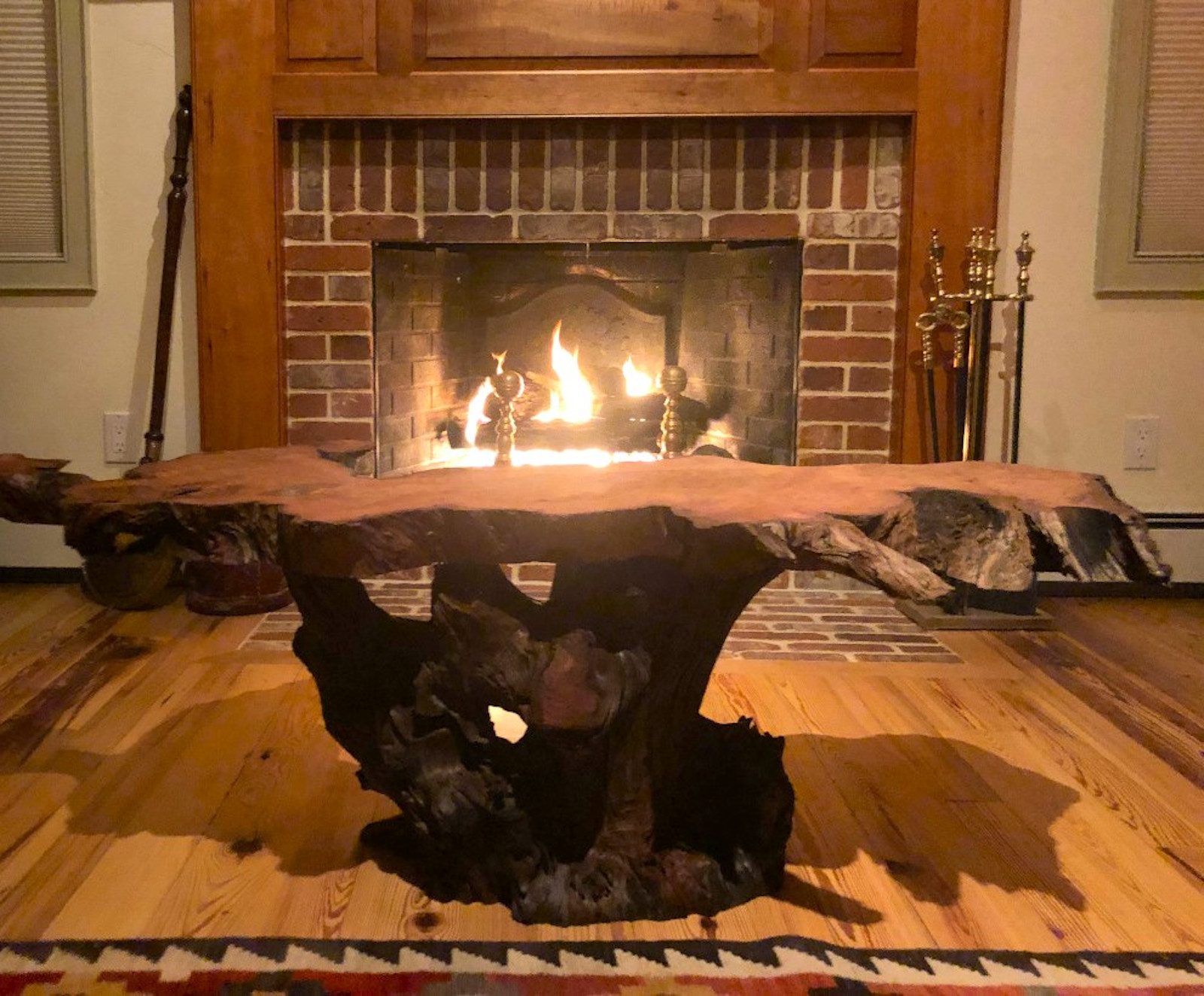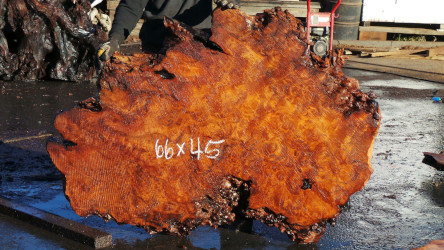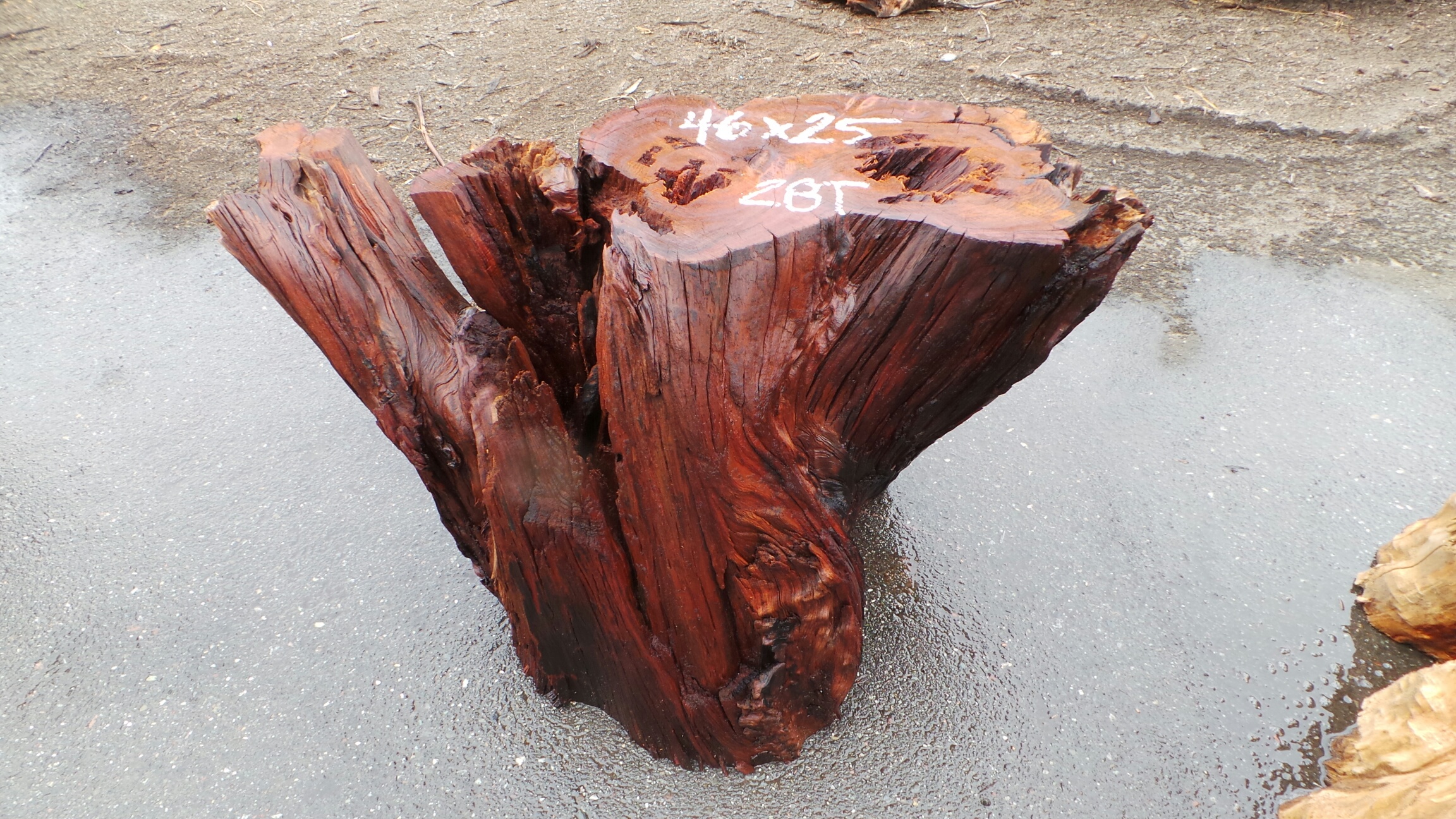
Creating a stunning, one-of-a-kind furniture piece starts with thoughtfully pairing a Redwood slab with a complementary tree stump table base. The natural beauty of Redwood—its rich grain, warm tones, and unique imperfections—makes it an ideal material for custom table tops. Other great options are wood species such as Western Red Cedar, Big Leaf Maple, and other wood species for table tops and various tree stump table base options that will pair nicely. However, achieving a harmonious and functional design requires careful consideration of the slab and table base color, contrast, texture, wood grain, and dimensions. The table’s height must also be considered for your needs. Here’s a guide to help you match and bundle these elements for a breathtaking result.
Step 1: Understanding Rustic Wood Slabs and Burl Bases
Natural wood slabs are cut directly from the tree, showcasing the wood’s organic patterns, knots, and live edges. Their width and length vary widely, making each piece unique. Burl slabs, on the other hand, come from the tree’s gnarled, highly figured growths, offering swirling grain patterns and a rustic charm perfect for table bases. The key to a successful pairing lies in balancing aesthetics and practicality.
Step 2: Measuring and Matching Dimensions
When selecting a slab and base, the width and length of the slab dictate the table’s footprint, while the base’s height determines its purpose (e.g., dining table, coffee table, or side table). Here’s how to approach it:
- Slab Width and Length: Pick a slab that suits your space. For a dining table, go for a width of 32–48 inches and a length of 72–96 inches to seat 6–8 people comfortably. For a coffee table, aim for a width of 20–36 inches and a length of 36–60 inches. Measure your room or existing furniture to find the ideal size. Dining tables come in various shapes and rustic styles, so leave 8–10 inches of clearance for chairs. Natural slab edges might taper, so check the narrowest and widest points to ensure the base provides solid support.
- Base Height: Coffee tables typically finish at 16–20 inches high to match standard sofa heights or suit your style, while dining tables are usually 30–32 inches for comfortable seating. Side tables, sofa tables, and end tables range from 20–36 inches. These are final heights, so if you’re using a slab top, adjust the base height based on the slab’s thickness to hit your target table height.
- Proportional Fit: The base should support the slab without stealing the show—safety comes first. A handy guideline: choose a base with a footprint (width and depth) that’s 40–70% of the slab’s size. For instance, a 40-inch-wide by 80-inch-long slab pairs well with a base about 20–28 inches wide and 40–56 inches long. This keeps the table stable while highlighting the slab’s natural charm.
Step 3: Aesthetic Harmony
Beyond measurements, consider how the slab and base visually complement each other:
- Grain and Color: Redwood slabs often feature straight, flowing grain with reddish-brown hues, while burl bases have wild, swirling patterns. Pair a slab with subtle grain to a highly figured burl base for contrast, or match a dramatic slab with a simpler base to avoid clashing.
- Edges and Texture: A live-edge slab with rugged, natural contours pairs beautifully with a burl base’s organic, knotted texture. Opt for a squared-off slab with a smoother burl base for a polished look.
- Finish: Decide whether to finish both pieces with the same product, such as varnish or epoxy finishes.
Step 4: Bundling for Stability and Style
Once you’ve chosen your slab and base, bundling them effectively ensures a sturdy, cohesive table:
- Consider the source for purchasing your slab and table base. Reputable companies should provide you with dried material, a slab that is flat (or flattened), and a base that is cut level and parallel to the ground.
- Attachment: Secure the slab to the base using sturdy dowels, screws, and brackets, or mounting plates. These are commonly used to attach wood slabs to a table base depending on the base design. Adhesives are not recommended. For wider slabs (over 36 inches), a base with ample support points is necessary.
Step 5: Practical Examples
- Dining Table Bundle: A 42-inch-wide by 84-inch-long slab with a 3-inch thickness pair with a 27 to 28-inch-high burl base (24 inches wide by 48 inches long). Perfect for family gatherings, with ample legroom and a bold, rustic centerpiece.
- Coffee Table Bundle: A 30-inch-wide by 54-inch-long slab and 3-inch thick slab atop with a 15 to 17-inch-high burl base (18 inches wide by 36 inches long). Ideal for a cozy living room, with a low profile that invites conversation.
Final Thoughts
Matching a wood slab with a wood burl table base is an art form that blends functionality with nature’s craftsmanship. By focusing on the slab’s width and length, the base’s height, and their visual synergy, you can create a custom table that’s both practical and awe-inspiring.
Browse our Redwood slabs and burl bases collection to find your perfect pair, and let the wood’s story elevate your space:
Use coupon code “BUNDLE” for a 10% discount for purchasing together.


